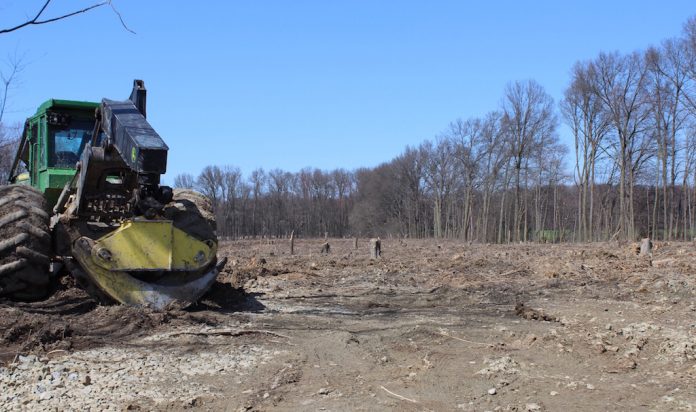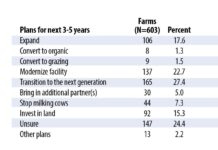
(Story last updated, 1:15 p.m., Sept. 25.)
WOOSTER, Ohio — The Ohio Environmental Protection Agency approved Sept. 21 a permit to install a 9.2 million gallon biosolids storage pond in Wayne County, north of Wooster.
Buckeye Biogas, a subsidiary of Quasar Energy, is building the project on land known as the Wiles Farm, located east of the intersection of Friendsville and East Pleasant Home roads.
The treated biosolids will be stored and later land applied at Ohio EPA-approved sites, according to the Ohio EPA. The company says it will treat the biosolids at its Wooster anaerobic digester facility, located on the campus of the Ohio Agricultural Research and Development Center.
The project has been a controversial one, with concerns that the lagoon will lower property values and cause environmental damage and a potential risk to public health.
“We’re obviously disappointed and extremely upset with this approval,” said Kelly Miller, one of the spokespeople for a local community action organization, known as Canaan Residents against Pollution, or CRAP.
Looking ahead
Some residents in Canaan Township, where the lagoon will be built, are pursuing a zoning measure to protect against land uses like the biosolids lagoon, but Miller said that process will take more time.
She said she’s concerned what will happen down the road, and whether the storage and application of biosolids will hurt future generations.
“Quasar is not known for following rules and guidelines, and it just makes me very nervous that we’re putting our trust in a big corporation that has shown in the past that they are not deserving of our trust.”
According to an official statement by the community organization: “We will continue to try to stop this lagoon by all means possible while supporting our agriculture community and educating people on these harmful industrial sewer sludge lagoons.”
The company has a history of violations that include a lawsuit in 2016 over odor issues, which was later dropped at the request of Ohio EPA Director Craig Butler.
But Quasar Energy spokesperson Joe Jenkins said he’s pleased with the Ohio EPA’s decision, and he hopes for a bright future as the project moves ahead, presumably within the next couple weeks.
Public perception
He said the company is working hard “to be a good neighbor” and answer public questions as they arise. He has insisted the amount of processed human biosolids in the lagoon will be minimal, compared to other wastes.
“We are looking forward to moving forward with this process,” he said. “We think that it’s a good thing not only for the agricultural community, but all throughout Ohio.”
Jenkins said that Quasar anticipated the kinds of requirements that the EPA stipulated, and that his company “has followed all of the rules they laid out to a T, and we will continue to do so.”
The Ohio EPA hosted a public meeting and accepted public comments about the permit application in April. After additional Ohio EPA review and to address public concerns, the pond’s design was improved and additional requirements added to the final permit, according to the EPA.
Improvements include:
- constructing an 18-inch thick re-compacted clay liner topped by 6 inches of soil cover;
- developing a ground water monitoring program and installing a ground water monitoring network;
- requiring all biosolids to be treated to Class B biosolids standards before leaving Buckeye Biogas;
- monitoring for volatile solids content at the Buckeye Biogas digester to demonstrate sufficient treatment is provided to better control odors before the material is transferred to the storage pond;
- prohibiting the generation of nuisance odors and requiring a company response if nuisance odors occur; and
- developing an operational plan to ensure that adequate storage volume is provided during the winter and spring when weather conditions typically prevent land application.
Related coverage:
- Wayne County residents share disdain for lagoon (April 18, 2018).
- Wiles Lagoon stirs debate in Wayne County (March 1, 2018).
- What are biosolids and are they safe? (March 20, 2018)
- Wayne County residents oppose waste lagoon
- Ohio State’s anaerobic digestion technology now being commercialized
Thursday, February 16, 2012 - Quasar gets $1 million grant for anaerobic digester project at impaired Ohio lake
Saturday, August 27, 2011 - OARDC, Quasar partner for newest digester
Tuesday, December 15, 2009










GREAT! (NOT!) So the all-powerful all-knowing Ohio EPA has given this mess its blessing. Sad, Very sad.
For all those concerned, check out this EPA “approved” nightmare in Ohio; it was to be a $1B deal on 50 acres:
https://www.youtube.com/watch?v=Mr1CWRc174o
P.S.
The man behind all the corporate shells of “City View Center LLC, one John McGill of Florida, personally signed bank guarantees of some $140,000,000.00 for the malls he was developing. When the ‘methane hit the fan,’ he merely filed bankruptcy in Florida, and asked the bankruptcy judge there to “exempt” his $6,000,000.00 home there as his ‘homestead.” Voila! He walked.
EPA!
EPA!
EPA!
This is a good step forward allowing farmers to work closer with their Urban neighbors manage phosphorus issues that result in algae blooms. By allowing local storage farmers will be able to timely applicate the biosolids when the weather is fit reducing compaction and providing a renewable resource for crops to grow. It’s about time we move away from nonrenewable and synthetic fertilizers.